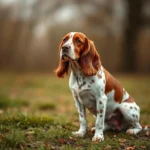
Introduction
Pitsky, a captivating hybrid breed, is the result of crossing a Pitbull with a Siberian Husky. This unique combination brings together the strength and loyalty of the Pitbull with the intelligence and spirited nature of the Husky, creating a dog that is both affectionate and energetic.
As hybrid dog breeds gain popularity, understanding their traits and needs becomes increasingly important. Owners are drawn to these mixes for their unique looks and personalities, but each breed carries its own set of characteristics and care requirements.
In this article, we will delve into the fascinating world of Pitskys, exploring their history, physical traits, temperament, care needs, training tips, and what it’s like to live with this exceptional breed.
Overview of Pitsky
History of the Pitsky
The Pitsky emerged from the desire to blend the qualities of two distinct breeds: the Pitbull and the Siberian Husky. The Pitbull, known for its strength and loyalty, has roots in the working dogs of England, originally bred for bull-baiting and later as farm dogs. Siberian Huskies, on the other hand, were bred by the Chukchi people of Siberia for their endurance and ability to pull sleds over long distances.
This hybridization often stems from a need for a companion dog that possesses both the affectionate nature of the Pitbull and the playful, energetic spirit of the Husky. As families seek out diverse dog breeds, the Pitsky has become a popular choice due to its appealing characteristics.
Physical Characteristics
Pitskys typically fall within a weight range of 30 to 80 pounds, depending on the traits they inherit from their parent breeds. Their height usually ranges from 18 to 24 inches at the shoulder.
In terms of coat types, Pitskys can have a range of appearances, from a short, sleek coat to a longer, thick fur coat reminiscent of their Husky ancestry. Color variations include black, gray, tan, and a mix of these shades, often with striking markings that enhance their visual appeal.
Distinctive features of a Pitsky include expressive eyes that can be blue, brown, or even one of each, and ears that may be erect or floppy, adding to their unique charm.
Temperament and Personality Traits
The Pitsky is known for its friendly, loyal, and energetic temperament. They are typically very affectionate with their families and can be good with children, making them wonderful family pets. Their playful nature means they enjoy interactive games and activities, often resulting in a strong bond with their owners.
When it comes to compatibility with other pets, early socialization is crucial. Pitskys can get along well with other dogs, particularly if raised together, but they may have a high prey drive due to their hunting instincts, which could pose challenges with smaller animals.
Care Requirements for Pitskys
Dietary Needs
A well-balanced diet is essential for a Pitsky‘s health. High-quality dog food that meets their nutritional needs is recommended, ideally rich in protein to support their active lifestyle. A typical feeding schedule includes two meals per day, spaced evenly to maintain energy levels and prevent obesity.
Some Pitskys may experience food allergies, commonly to grains or certain proteins. Monitoring their reactions to different foods and consulting with a veterinarian can help identify any dietary restrictions.
Exercise Requirements
Pitskys are energetic dogs that require regular exercise to stay healthy and happy. Daily physical activity is crucial, with a recommended duration of at least 60 minutes. Activities such as brisk walks, running, or playing fetch can help channel their energy positively.
Engaging in mentally stimulating exercises, like puzzle toys or obedience training, can also be beneficial, as Pitskys thrive on mental challenges and companionship.
Grooming Needs
The grooming frequency for a Pitsky largely depends on their coat type. Dogs with longer fur may require more frequent brushing, typically two to three times a week, while those with shorter coats may only need brushing once a week.
Essential grooming tools include slicker brushes for detangling and shedding, as well as regular nail clippers and dental care products to maintain overall health.
Health Considerations
Like all breeds, Pitskys can be prone to specific health issues, including hip dysplasia, allergies, and skin conditions. Regular veterinary check-ups and vaccinations are vital in ensuring their long-term health. Keeping an eye on their weight and activity level can also help mitigate potential health risks.
Training a Pitsky
Early Socialization
Socialization plays a critical role in development for a Pitsky. Exposing them to various environments, people, and other animals from a young age can help foster a well-rounded adult dog. Puppy classes or dog parks can be excellent venues for this.
Basic Training Techniques
Positive reinforcement is the most effective training method for Pitskys. Using rewards like treats and praise can motivate them to learn commands. Essential commands every Pitsky should learn include “sit,” “stay,” “come,” and “leave it.”
Consistency and patience are key in training sessions, as Pitskys can sometimes exhibit stubborn tendencies due to their independent nature.
Behavioral Challenges
While Pitskys are generally eager to please, they can face behavioral challenges, such as separation anxiety or excessive energy. Strategies to address these issues include increasing exercise, providing engaging toys, and gradually acclimating them to alone time to prevent anxiety.
Living with a Pitsky
Ideal Living Environment
Pitskys can adapt to various living environments, but they thrive best in homes with ample space to run and play. A house with a yard is ideal, but they can also do well in apartments if given enough exercise.
Considerations for urban living include access to parks and open areas, while rural settings provide plenty of space for exploration and play.
Family Dynamics
Pitskys are generally good with children and can fit well into diverse family structures. Their playful nature makes them excellent companions for kids, but supervision is recommended to ensure safe interactions.
When introducing a Pitsky to other pets, it is essential to do so gradually, allowing time for adjustment and understanding of boundaries.
Time Commitment
Owning a Pitsky requires a significant daily time investment for care, training, and exercise. Ensuring they get the attention, love, and physical activity they need is vital for their well-being. Additionally, prospective owners should consider the long-term commitment, as Pitskys typically live around 12 to 15 years.
Pros and Cons of Owning a Pitsky
Advantages
One of the most significant advantages of owning a Pitsky is their loyalty and companionship. They are often described as loving and devoted family members. Their versatility as both family pets and potential working dogs makes them a great choice for many lifestyles.
Challenges
On the downside, Pitskys can have high energy levels, requiring considerable exercise and mental stimulation. This need may not be suitable for everyone, especially those with a more sedentary lifestyle. Grooming can also be a consideration, particularly for those with longer coats, as regular maintenance is necessary to keep them looking their best.
Conclusion
In summary, the Pitsky is a delightful hybrid breed that combines the best traits of the Pitbull and Siberian Husky. With their unique physical characteristics, friendly temperament, and energetic nature, they can make wonderful companions for the right family.
Before welcoming a Pitsky into your home, it’s essential to understand their needs and characteristics thoroughly. Researching and preparing for their care will ensure a harmonious relationship between you and your new furry friend.
As with any breed, potential owners should consider their lifestyle, living situation, and willingness to commit time and resources to provide a happy, healthy home for a Pitsky.







